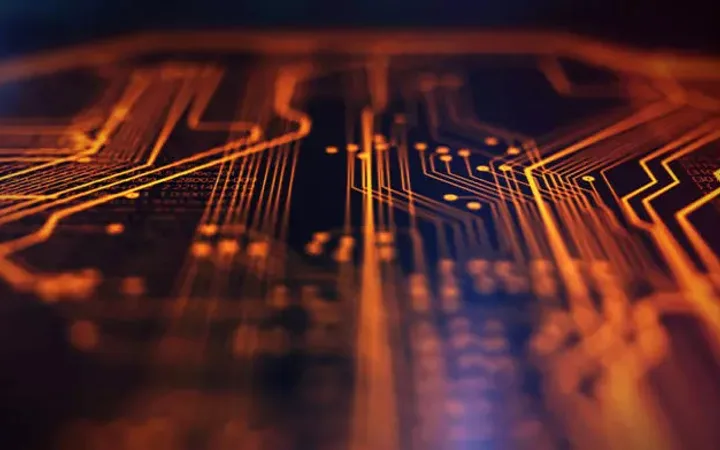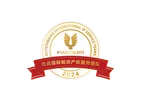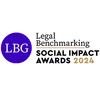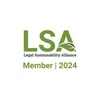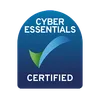To be eligible for patent protection, a computer-implemented invention (CII) must provide ‘a technical solution to a technical problem’.
#
However, the interpretation of ‘technical’ in patent law is complex, as it differs from country-to-country. Here, we explore recent case law to highlight the evolution in approaches at the UKIPO and EPO.
CII patentability at the EPO#
The assessment of CII patentability can differ from country to country. While a structured approach is taken in the UK and Europe, this is not always the case elsewhere.
Recent decision T 227/18 indicates that while the European Patent Office (EPO) takes a strict approach to patentability exclusions objections can be overcome if appropriate steps are taken to show that the invention has technical character using the EPO’s problem-solution approach.
Article 52(2)(c) EPC (European Patent Convention) covers the patentability of inventions in Europe and exclusions for “schemes, rules and methods for performing mental acts, playing games or doing business, and programs for computers”. However, Article 52(3) EPC states that the exclusions apply to the “subject-matter or activities referred to therein only to the extent to which a European patent or application relates to subject-matter or activities as such”.
The EPO's problem-solution approach#
Instead of raising the issue of patentability under Article 52(2)(c) EPC, and in response to the “as such” wording of Article 52(3) EPC, determining whether CIIs are patentable at the EPO is often decided by whether the invention involves an ‘inventive step’.
The problem-solution approach, as laid out in Guidelines G-VII, applies the stages of:
(i) determining the ‘closest prior art’
(ii) establishing the ‘objective technical problem’ to be solved
(iii) considering whether the claimed invention, starting from the closest prior art and the objective technical problem, would have been obvious to the skilled person.
The technical problem under step (ii) is formulated from the differences (or distinguishing features) between the determined closest prior art and the claimed invention. Specifically, the technical effect resulting from the differences is used to formulate the technical problem.
T 641/00 (commonly known as the Comvik Decision) was influential in implementing the problem-solution approach to CIIs. In practice, this means that if an invention consists of a mixture of technical and non-technical features, only those features that are technical in character can contribute to the determination of inventive step. Non-technical features can appear in the formulation of the technical problem, thereby rendering them obvious to the skilled person.
Guidance is provided on claims concerning CIIs in a dedicated index in the EPO’s Guidelines for Examination. Some examples of how the problem-solution approach can be applied to computer-implemented methods is provided in Guidelines G-VII, 5.4.2.1-5.4.2.4. One of the four examples given explores the mathematical method exclusion in relation to CIIs and provides a positive instance of an invention being determined technical (and therefore patentable).
Overcoming obstacles#
Decision T 227/18 provides another welcome example of how a computer-implemented invention — in this case one that has been subjected to business method exclusion objections — can overcome the obstacles and be deemed allowable.
The invention of the patent in question (EP 1939822) concerns a method for supporting a plurality of instances of the same type of payment application (e.g., MasterCard PayPass or Maestro PayPass) on a wireless smart device.
According to the problem-solution approach, document D5 (US 6220510 B1) was found to be the closest prior art because it deals with multiple applications stored on the same IC card. Three features of claim 1 were found to be novel over D5 — a wireless communication, use of an application of the same type, and activation of a specific instance for the application.
During prosecution, the Examining Division determined that these differences were considered to relate to business methods and that implementing the business application involved a straightforward solution. Importantly, internal and external communication (as realised in the present case) was considered a standard solution that enabled regulated communication flow. The application was therefore refused by the Examining Division.
An appeal was filed and contrary to the Examining Division’s findings, the Board of Appeal found that the differences of the invention over D5 were technical. The Board found that the differences provided the technical effects of enabling easy handling of a plurality of bank accounts with a single smart device and reducing storage space, since each application is stored only once.
Having established that the invention provided technical effects over the prior art, the Board found that the invention involved an inventive step for reasons including that it would seem neither obvious nor technically possible to connect one application to a plurality of instances when starting from D5. The Board went on to discuss what the skilled person could possibly have been led to invent when considering the disclosure of D5 and determined that they would still not arrive at the claimed invention. Claim 1 was therefore considered to be inventive.
Constant evolution of CII#
This case shows that rigorous application of the problem-solution approach can be used to the patentee’s advantage to show that an invention provides a technical solution to a technical problem. At the EPO, the verdict on whether the subject-matter of a claim is technical closely relies on the differences found over the closest prior art and whether said differences have an associated technical effect.
During the prosecution of computer-implemented business methods, ‘off-the-shelf’ patentability objections often occur. European patent attorneys are familiar with presenting the kinds of arguments supplied by the Board in favour of inventive step, such as those presented in T 227/18. The take-home message from this case is to always apply the problem-solution approach and insist on its rigorous application by the EPO — as opposed to settling for a broad-brush analysis, which is often applied in relation to claims considered to comprise a mix of technical and non-technical features. It is encouraging to see that the EPO is willing to acknowledge technical character rather than simply rejecting business methods outright when there is a good argument that can be backed-up by the specification. This decision gives applicants further confidence that inventions which are typically in danger of falling under Article 52(2)(c) EPC exclusions could be prosecuted more meaningfully in the context of the specification.
Such a decision highlights how much has changed in technology innovation (particularly in the world of software and computing) since the revised version of the EPC (EPC 2000) entered into force in December 2007. Case law and guidelines on patentability seem to be evolving from the more restrictive early decisions at the EPO into a more structured framework, suited for an industry that sees constant and unpredictable innovation. Perhaps the outcomes of some earlier cases — even those that were influential in shaping the European approach to patentability exclusions — could have been different if they were examined today.
The UK approach to computer-implemented business methods#
Some case law suggests that the UK Intellectual Property Office (UKIPO) and European Patent Office would reach the same result in practice despite their differing approaches to computer-implemented business methods (Lenovo (Singapore) PTE Ltd v Comptroller General of Patents [2020] EWHC 1706 (Pat), Symbian Ltd’s Application [2009] RPC 1, and HTC Europe Co Ltd v Apple Inc [2013] EWCA Civ 451). However, despite Section 1(2) of the Patents Act 1977 having almost identical wording to that of Article 52 EPC, the interpretation of patentability (particularly in relation to business methods) seems to have become divergent between the UKIPO and the EPO.
This divergence may result from differing case law and/or be influenced by the fact that the UKIPO, unlike the EPO, is bound by precedence to decisions made in UK courts. There seems to be a general understanding that patent applications are more likely to fall under an exclusion as a business method when prosecuted at the UKIPO (we have had first-hand experience with this, where cases that have been allowed by the EPO (sometimes without patentability being questioned at all) are unsuccessful before the UKIPO, as they are considered to fall under excluded subject-matter).
As illustrated in T 227/18, the EPO typically judges patentability based on the differences between a claim and the closest prior art, using the problem-solution approach. At the UKIPO, this is not typically the case. Instead, before a closest prior art document can even be established, patentability objections are likely to be raised based on the Aerotel/Macrosson test (as set out in Aerotel Ltd v Telco Holdings Ltd & Ors Rev 1 2007 RPC 7). The Aerotel/Macrosson test asks what the contribution of the claim itself is and whether this contribution is technical without reference to any prior art. The AT&T signposts provide some guidance on the allowability of CIIs at the UKIPO, but when it comes to computer-implemented business methods we find from experience that cases such as Merrill Lynch’s Application [1989] RPC 561 and Halliburton Energy Services Inc’s Applications [2012] RPC 129 can be particularly troublesome and are often cited.
CII patentability: UKIPO vs EPO#
Put broadly, while the UKIPO seems to judge patentability based on the field of the invention in general, the EPO seems to focus on what the inventors have contributed to the field of the invention in view of what has already been disclosed. The difference may seem subtle, though it leads to remarkably different practice in which the EPO’s problem-solution approach can sometimes usefully bypass the challenge of answering whether the subject-matter of a claim is specifically excluded (unless the exclusions are claimed as such).
If the patent in T 227/18 had been prosecuted at the UKIPO (or indeed at the UK courts), it is reasonable to think that the result may have been very different. It is uncertain whether the interpretation of the law at the UKIPO concerning business methods will ever be consistent with that of the EPO — so it’s important to work with patent attorneys who have experience in both territories if you’re looking to protect such an invention.
For advice on protecting CIIs, get in touch for a free initial chat about your invention.
